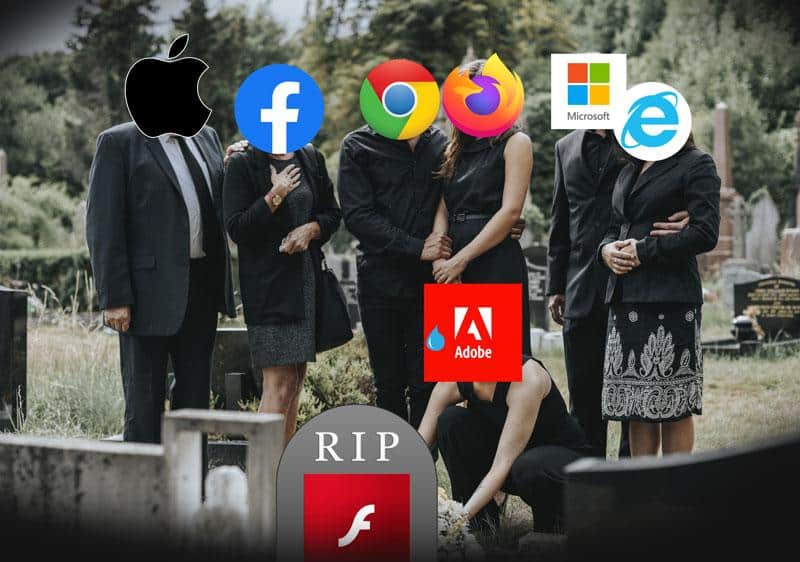- Adobe Flash Player Mac Update
- What Will Replace Adobe Flash Player On Mac
- How To Replace Adobe Flash Player On Mac
- Adobe Flash Player For Mac
Adobe Flash Player is a multimedia player that plays the SWF and is in-built in most browsers. Flash Player for Mac is compatible with Firefox, Chrome, and Opera. While the program takes low network bandwidth and the websites with flash animations load faster on Mac devices, the program takes up a lot of CPU resources. I read the EOL above but I am still unclear what I have to do. Is there something that Apple uses to replace Flash Player? The only step that you should consider is to Uninstall Adobe Flash Player using the instructions provided in: Uninstall Flash Player Mac OS. Website providers will have to update their content delivery options, which is.
On January 12, Adobe activated their End-Of-Life Killswitch, disabling Flash Player on millions of machines worldwide. Needless to say, not everyone is happy with the decision.

Many members of the Flash community have come up with workarounds to continue to run .swf files in the post-EOL era. Read on to find a workaround that best suits you!
Do you still use Flash Player? Data Horde is conducting a survey to see how frequently people continue to use Flash Player even at the very end of its lifespan. It would mean a lot to us if you could spare 5-10 minutes to complete a very short survey.
Emulation:
It’s still possible to run Flash Media (.swf files) without actually using Flash Player. Two mature Flash Player emulators are Ruffle (ActionScript 1&2) and Lightspark (ActionScript 3). Ruffle even has an online demo if you’d like to see it in action before installing.
You can find a more thorough list of emulators in the Flash Player Emergency Kit.
Chrome Flags:

If you’re using any version of Google Chrome, up to and including Google Chrome 87, you might not have to install anything at all! You should be able to continue to use an older version of Flash Player which was immune to the effects of the EOL Killswitch.
Simply run Chrome with the --allow-outdated-plugins flag:
Downgraded Firefox:
In addition to the EOL killswitch, Adobe have gone out of their way to remove downloads for previous versions of Flash Player from their website. That being said, there are ways to acquire a past versions of Flash Player, immune to the EOL killswitch.
An out-of-the-box solution is to install Waterfox, a modern fork of Firefox which also supports a lot of legacy features including Flash Player, among other things.
If you would rather stick to a more traditional approach, u/Cifra85 made a Reddit post on how to install a portable Firefox Browser which comes bundled with an older version of Flash Player:
If you’re concerned about incompatibility, another option is Firefox 78 ESR (Extended Support Release) which will continue receiving updates until September of this year.
Modify Configuration File:
Adobe has made it no secret that they intend to offer a killswitch workaround for enterprise customers, via their partner HARMAN, starting February. Leave it to the online Flash community to discover it in January!
Spider, an Adventure Quest fanatic, was one of the first people to discover that all it took was a couple of modifications to a configuration file!
If you’re not on Windows, mms.cfg goes in /Library/Application Support/Macromedia on Mac and /etc/adobe/ on Linux. For more details on mms.cfg see Flash Player 32’s manual (page 41).
Flash Player Projector:
Using the Flash Player projectors, it’s possible to run .swf’s outside of a browser, with some minor limitations. Strangely projectors for Windows, Mac and Linux have not been removed from from Adobe’s website and are still available.
Flash Player projectors can be downloaded from Adobe’s Flashplayer Debug Downloads Section, and mirrors can be found on the Wayback Machine and the Internet Archive.
Alternative Ways of Running Old Versions of Flash:
As a final workaround, you can try running an old version of Flash Player outside of a browser. Although there are a number of third-party archives out there, setting these up can be non-trivial.
Instead we would highly recommend Bluemaxima’s Flashpoint, a Flash game/animation Browser of sorts which comes with a built-in older version of Flash Player.
We hope you were able to find a solution that works for you. If you have any comments or suggestions let us know at datahorde@gamingalexandria.com.
Now go on and spread the word! Tell all your friends and family how they can continue to use Flash Player even in 2021!
These instructions are NOT applicable to Flash Player included with Google Chrome. Visit the Flash Player Help page for instructions on enabling (or disabling) Flash Player in various browsers.
If you use Windows, see Uninstall Flash Player | Windows.
If your Flash Player installation was not successful, use the following solution to reinstall.
Click the Apple icon and choose About This Mac.
The Mac OS version appears in the About This Mac dialog.
2. Run the uninstaller applicable to your Mac OS version
Adobe Flash Player Mac Update
- Run the uninstaller on Mac OS X 10.4 and later, including macOS
Note:
Beginning with Flash Player 11.5, uninstalling the Flash Player resets the AutoUpdateDisable and SilentAutoUpdateEnable settings in mms.cfg to their default values:
- AutoUpdateDisable=0
- SilentAutoUpdateEnable=0
What Will Replace Adobe Flash Player On Mac
If you are running the Flash Player uninstaller as part of your deployment process, redeploy any custom changes to either AutoUpdateDisable or SilentAutoUpdateEnable.
Run the uninstaller on Mac OS X 10.4 and later, including macOS
Download the Adobe Flash Player uninstaller:
- Mac OS X, version 10.6 and later: uninstall_flash_player_osx.dmg
- Mac OS X, version 10.4 and 10.5: uninstall_flash_player_osx.dmg
The uninstaller is downloaded to the Downloads folder of your browser by default.
In Safari, choose Window > Downloads.
If you are using Mac OS X 10.7 (Lion), click the Downloads icon displayed on the browser.
To open the uninstaller, double-click it in the Downloads window.
Note: If the Flash Player installer window does not appear, choose Go > Desktop in the Finder. Scroll down to the Devices section and click Uninstall Flash Player.
To run the uninstaller, double-click the Uninstaller icon in the window. If you see a message asking if you want to open the uninstaller file, click Open.
- Bookmark or print this page so that you can use the rest of these instructions after you close your browser.
To close all browsers, either click the browser name in the Uninstaller dialog, or close each browser manually and then click Retry.
Note: Do not click Quit in the Uninstaller window. It stops the uninstallation process.
After you close the browsers, the uninstaller continues automatically until the uninstallation is complete. When you see the message notifying you that the uninstallation succeeded, click Done.
Delete the following directories:
- <home directory>/Library/Preferences/Macromedia/Flash Player
- <home directory>/Library/Caches/Adobe/Flash Player
Download the Adobe Flash Player uninstaller:
- Mac OS X, version 10.3 and earlier: uninstall_flash_player_osx_10.2.dmg (1.3 MB) (updated 05/27/08)
Choose Window > Downloads to view the downloaded uninstaller.
Save the uninstaller file in a convenient location.
To open the uninstaller, double-click it in the Downloads window.
To run the uninstaller, double-click the Uninstaller icon in the window. If requested, enter your computer user name and password and click OK.
Bookmark or print this page so that you can use the rest of these instructions after you close your browser. Close all browsers and other applications that use Flash Player, including instant messaging applications, SWF files, and projectors (EXE files that play SWF files). Otherwise, the uninstaller cannot finish (even though it appears to finish).
Once the uninstaller finishes, the window closes automatically.
How To Replace Adobe Flash Player On Mac
You can verify that uninstallation is complete by following these steps:
Adobe Flash Player For Mac
Open your browser and check the status of Flash Player.
